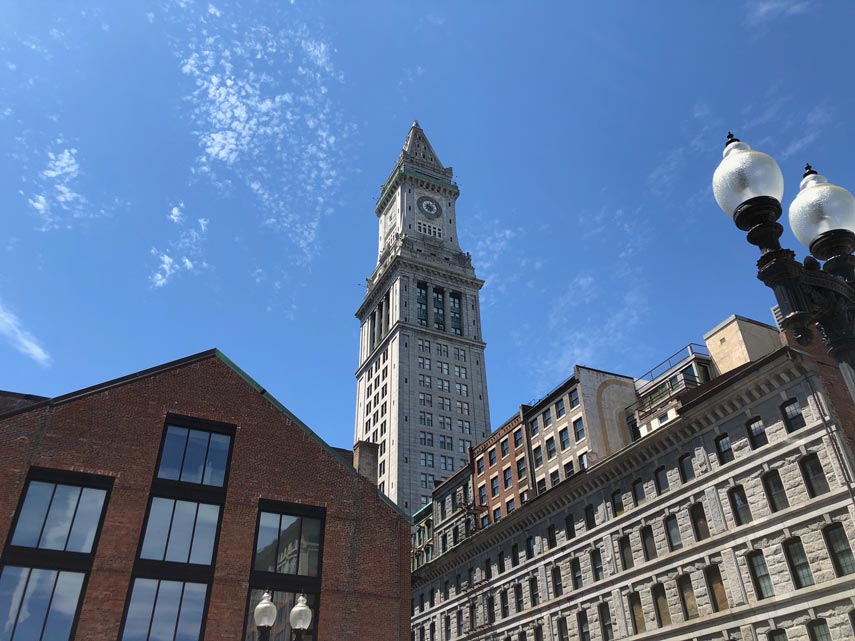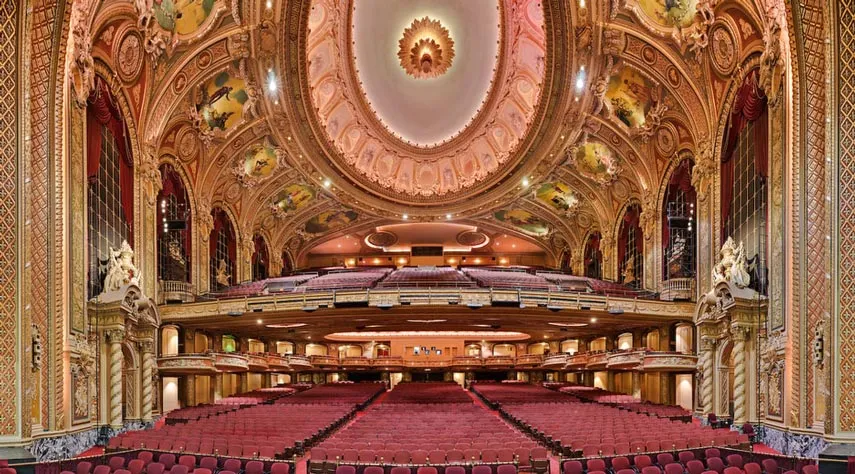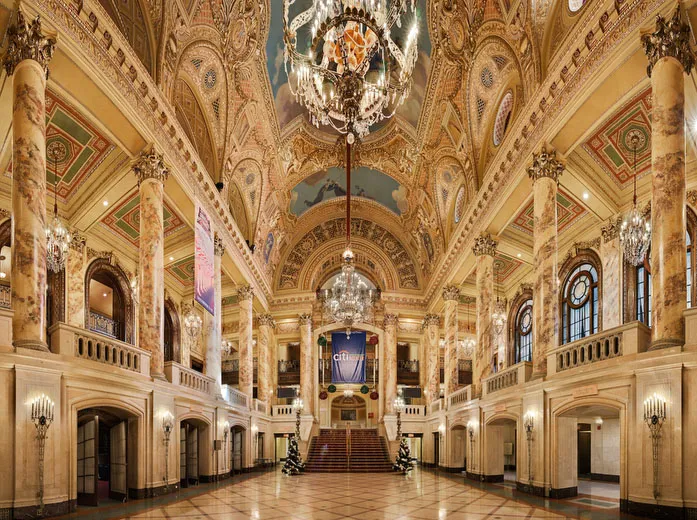Instantly Search Millions of Tickets
Wang Theatre Tickets | Things To Do In Boston | Boch Center | Boston Nightlife
Use Promo Code SEATSFOREVERYONE For An Added Discount
- All Sales Are 100% Fully Insured
- Discount Prices
- Instant Download Available
- Credit Cards and PayPal Accepted
- Fast And Easy, No Signup Required
- Wang Theatre Promo Code
Things To Do In Boston
Wang Theatre Tickets
Wang Theater Parking
Wang Theater Box Office
Wang Center Box Office
Boch Center Tickets
Wang Theatre Seating Chart
Boston On Stage
Boston Theater Guide
Broadway In Boston
Plays In Boston
Shows In Boston
Comedy In Boston
Boston Theater
Musicals In Boston
Comedy Shows Boston

Boston Fun Things To Do This Weekend
Boch Center – Wang Theatre Important Facts and History
270 Tremont Street
Boston, MA 02116
Public Transportation:
Orange Line – Tufts Medical Center
Green Line – Boylston Street
Red Line – Park
Parking:
200 Stuart Street. 660 Washington Street. Boston Common Theatre District Garage.
The Wang Theatre captures more than 85 years of history of Boston’s deep and enriching arts and culture scene. The theatre continues to stand as a vital part of Boston’s historic Theatre District.
The Wang Theatre opened in Boston in 1925 as The Metropolitan Theatre. Clarence Blackall designed the theatre. Max Shoolman developed The Metropolitan Theatre. Blackall also designed 12 other theatres in Boston to include the Wilbur Theatre and the Copley Plaza Hotel. It didn’t take long for the theatre to earn the affectionate nickname of “The Met”. “The Met” is widely considered the most important Boston historical landmark capturing the essence of the Roaring Twenties.
In 1962 the theatre was renamed to The Music Hall. It was home to the newly formed at the time Boston Ballet. During this period The Music Hall did enjoy periods of success, but ultimately it fell behind the times. Many performances considered the theatre to have a grand stage that was too shallow and outdated and insufficient production facilities. Many touring companies bypassed Boston and The Music Hall.
In 1980 the theatre converted to a nonprofit operation and welcomed much needed renovations to the stage and infrastructure. Dr. An Wang, the founder of Wang laboratories, unleashed the era of the Wang Center for the Performing Arts. Dr. Wang’s energetic embrace of the theatre sparked a resurgence of interested and the nearly $10 Million in funds raised helped the theatre return to its vibrant days of the 1920’s.
Since the massive restoration and injection of spirit and excitement, the Wang Center for the Performing Arts has hosted a wide range of highly successful theatre, music, dance, and film performances. The theatre smashed box office records with Les Miserable and The Phantom of the Opera. Musicians and performers such as Harry Connick Jr., Whitney Houston, and Lady Gaga have conducted highly successful performances at the theatre. During this time the Wang Theatre also executed its hit series highlighting Classic Films.
Success and expansion lead to the theatre taking over the operations and productions of the Shubert Theatre. In 2006 the theatre entered into a long term partnership with Citigroup. In September of 2016 the theatre entered into a long term naming rights agreement with the Boch family. The Boch Center is the new and current official name and the theatre continues to control and operate both the Wang property and the Shubert Theatre.
Wang Theatre in Boston, MA
The Wang Theatre remains one of the most popular and historically significant theatres throughout the Boston area. The theatre is nestled in a 1925 historic building that was previously known as the Metropolitan Theatre/Metropolitan Center but was later renamed the Music Hall. Situated on the 252 – 257 Tremont Street of the Theatre District, the design work of the theatre was done by Clarence Blackall. The business operations of the theatre are done as part of Boch Center which was previously the Citi Performing Arts Center. In the year 1990, the Boston Landmarks Commission designated the theatre a Boston Landmark status. History
Originally opened in 1925 as the Metropolitan Theatre, the Wang Theatre was another brilliant design work of the renowned architect, Clarence Blackall in collaboration with C. Howard Crane, a theatre architect from Detroit. In the year 1962, the Metropolitan Center was turned into a home of the Boston Ballet which led to its getting renamed the Music Hall. Throughout the 1960s and the 1970s, audiences were treated to a number of different shows that included Bolshoi Ballet, Kirov Ballet, Metropolitan Opera as well as Stuttgart Opera among several other popular performing artists and movies.
In as much as the Music Hall was an exciting theatre, with time, it lots its ability to interest larger touring companies especially due to the size of the stage and the production facilities that were rather outdated. Profits were running low and in 1980, the theatre was converted to a non-profit center after which it was renamed the Metropolitan Center. This revitalized the theatre and made it attractive to theatrical performances once again.
Renovations
Wang Theatre was however created later on in 1983 when Dr. An Wang made a sizeable donation to the theatre. Between 1989 and 1992, approximately $9.8 million was raised with an aim of restoring the theatre to its former glory. Finegold Alexander + Associates Inc., an architecture firm based in Boston embarked on the restoration of the theatre and renovating the various elements that needed improvement. The entire renovation process was a success and in just a short while, most of the theatre had been renovated to perfect condition.
Conrad Schmidt Studios worked on decorating the theatre, providing the gilded moldings, marbleized surfaces, scagliola as well as the murals. The Citi Performing Arts Center, in 2008, announced for the Wang Theatre a co-booking arrangement with The Madison Square Garden Company. Since its renovation it has been used for various shows that include the movie American Hustle, casino scenes, live band performances, The Witches of Eastwick and for a number of scenes of Gilded Lilys.
Interesting Facts
- Construction of the theatre cost $8 million which today translates to a lot more than $80 million
- During the 1920s, all ushers at the theatre were male and during performances, they would only communicate using sign language
- The Kresge Foundation donated towards the upkeep of vital facilities of the theatre in 2011
Transportation and Parking
There are a number of public transport options to the Wang Theatre with the most convenient MBTA stops to the Boch Wang Theatre being the Orange Line/Tift Medical Center Stop as well as the Green Line /Boylston Street stop. Both options are located just a block away from the theatre. For those that need parking, a number of parking options are available with several parking lots situated near the theatre. There is the Tufts Medical Center Garage which is adjacent to the theatre. The Theatre District Parking is also just close by. Other parking options are the Standard Garage, City Place Garage and the Stuart Street Garage.
Hotels Near Wang Theater Boston
There are several hotels near the Wang Theater in Boston that are within walking distance. A few in particular are very close by. The W Hotel is literally steps away. The Revere Hotel is a two minute walk. A brand new hotel with "microrooms" is opening in the summer of 2019 called The Moxy.
Boch Center – Boston Theatre District
The Boch Center and Wang Theatre are smack in the middle of a resurgence in the Boston downtown area and specifically the Theatre District. The area is very well connected by T stops on the Green Line and Orange Line via multiple Green Line stops and Orange Line stops at Tufts Medical, Chinatown, and Downtown Crossing. All of these are within very quick walking distance to the Boch Center.
There is also a brand new hotel and luxury condo high rise called The W by Marriott. Given the success of that property other skyscrapers are under construction already in the immediate area. The area is very lively and becoming a lot more walker friendly. Things indeed are looking very bright for the Wang Theatre in Boston.
All of this activity is self-reinforcing and helping to bring in more performances to the Wang Theatre and Boch Center. Stay tuned for more updates. the Wang is right in the middle of the bustling Theatre District and Downtown Crossing area where you can find the Citi Emerson Colonial Theatre and the Citizens Bank Opera House. Don't forget about the nightlife in Boston with the Wilbur Theatre and Royale Boston.
Ernie Boch Jr. and The Boch Foundation
The Boch Foundation operates primarily two different ventures – The Boch Center and Music Drives Us. Music Drives Us is located in Norwood, MA and the Boch Center is the guardian and caretaker of the Wang Theatre and Shubert Theatre on Tremont Street in Boston’s historic Theatre District.
Ernie Boch Jr. was born in 1958 and is the CEO, President, and spokesperson of Boch Enterprises. Boch inherited the family business started by his grandfather. His grandfather, Andrew Boch, started the business by purchasing a Nash Motors franchise in Norwood, MA.
Boch’s father, Ernie Boch Sr., oversaw the massive expansion of Boch auto dealers and is widely credited with creating the “Automile” on Route 1 in Norwood which consists of numerous competing auto dealerships all along Route 1 in Norwood. He also got the catchy “Come On Down” phrase going and was known for his outlandish and outrageous advertising campaigns.
Boch Jr. is extremely passionate about music. He formed a band named Ernie And The Automatics and has appeared on television to include The Phantom Gourmet.
Tremont Street in Boston
Located in Boston, Massachusetts, Tremont Street is a major thoroughfare that is lined with quite a number of interesting attractions. The street, one of Boston’s busiest, has built quite a rich history for itself over the years of its existence. The street runs from the Government Center and creates Boston Common’s eastern edge. It is the continuation of Cambridge Street. Tremont Street goes right through the Boston Theater District then across Massachusetts Turnpike before enlarging into a broad boulevard in South End. After the South End neighborhood, Tremont Street takes a westerly turn, going through Mission Hill as a four-way street before ending at the Brigham Circle. This is the point of intersection of Tremont and Huntington Avenue.
History
Tremont Street dates way back in time. Back in the 1890s, the street experienced high foot traffic, trolley lines and electric streetcars which often resulted in gridlocks. In 1894, a commission was established to seek remedies for the rising traffic congestion that faced Boston, Tremont Street was one of the areas targeted by the Boston Transit Commission. Construction of a small-scale subway was then recommended to help in easing the congestion between Tremont Street, Scollay Square and Boylston Street.
An act was approved in 1894 to authorize the construction of a subway that led from Tremont Street to Pleasant Street. All of these activities led to the construction of the Boston Subway, the first of its kind in America.
On the 12th of August, 1942, Tremont Street witnessed another historical event. Just around the Park Street Station, an unexpected air raid alert was sounded. The test was conducted without warning to both the public and civilian defense personnel. This was the very first time that such a test was done by special signal on sirens instead of the customary telephone messages.
Changes over time
Tremont Street has been transformed quite considerably over the past years. From the construction of the subway through to the building of exquisite real estate along the street, the street has changed both in beauty and functionality. Currently, there is a widening project that is underway to help in boosting travel times for the road users. The project is also set to renovate the street and improve it to current standards. Instead of its current two lanes the street is to be expanded into a four-lane street. Other features that are to be added include new LED streetlights, roundabouts and storm drainage.
Top Attractions on Tremont Street
Being one of the most popular streets in the region, there are several attractions one can visit while in the area. The South End for instance is the perfect place to enjoy an evening stroll. For an adventurous person, The Haunted Boston Ghost Tours are definitely an exciting way to spend time in the area. Other popular attractions include Tremont Place, King’s Chapel, the Government Center, Suffolk University Law School and the Masonic Grand Lodge. For the art lovers, there is the Wang Center for the Performing Arts as well as the Boston Center for the Arts. There is also the Boston Theater District.


Sitemap: https://www.seatsforeveryone.com/sitemap.xml
Broadway Theatre Information: https://www.tdf.org
Music News: https://www.vulture.com
Music News: https://www.billboard.com